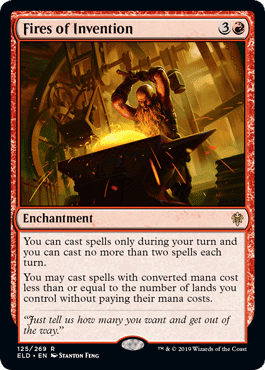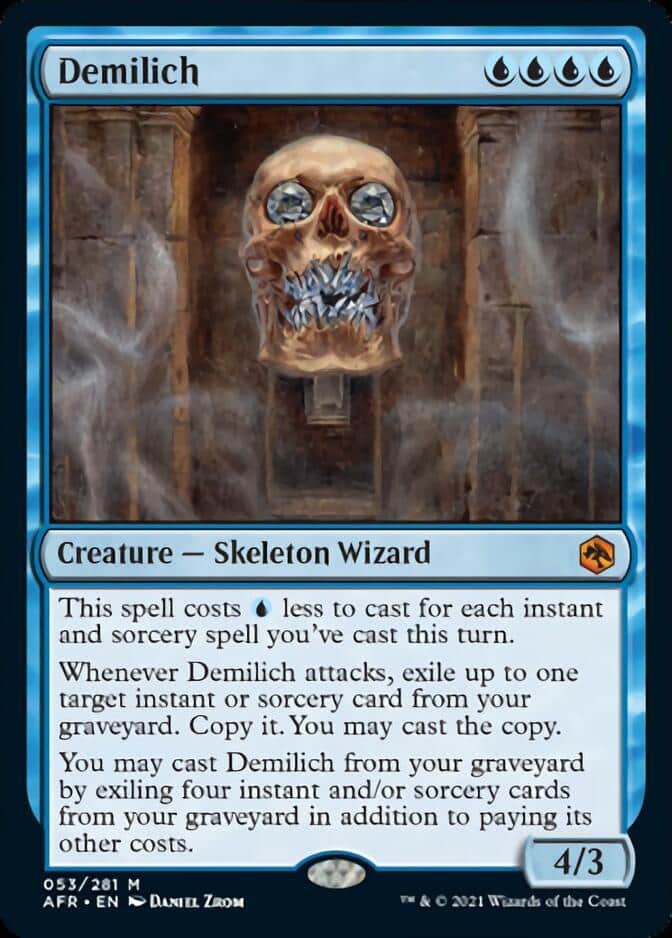One of the most exciting times in Magic: the Gathering is preview season. When a new set comes out, getting to see the new cards and plan new decks around them is such a fun exercise, whether it’s for casual or competitive play. An inevitable part of preview season is evaluating new cards. One of Magic‘s most accomplished Pros, Paulo Vitor Damo da Rosa (PVDDR), put out a video today on YouTube talking about how he evaluates cards in a new set. We’ll break the video down a bit into it’s parts so you can start evaluating cards like a pro!
3 Types of Cards to Evaluate
PVDDR goes through a few different examples of types of cards that he starts evaluating when a new set is spoiled. First off is broken cards, second is the set’s themes, and 3rd are cards that fit into existing decks.
Evaluating Broken Cards
The first set of cards that we should be looking at are the “broken” cards that spawn a new archetype. How do we identify “broken” cards? This is actually a bit easier to do than it would seem. PVDDR points out that there’s characteristics of broken cards in the past that we can look for in new cards. Examples of this are cards that cheat on mana, cards that can draw a lot of cards, and cards that can be cast from the graveyard. A few examples of this are Fires of Invention, Teferi, Hero of Dominaria and Emergent Ultimatum. A few cards that are mentioned from Adventures in the Forgotten Realms that fit this category are Demilichp and Ebondeath, Dracolich.
Evaluating Set Themes
The next set of cards that we can look at are the set themes. In the recent past, set themes have basically had decks pre constructed for them, meaning that if you include a bunch of the cards that have that theme in the deck, the deck usually does very well. Examples of this that PVDDR gives are Food and Adventures from Throne of Eldraine, and Cycling from Ikoria, Lair of Behemoths. In Forgotten Realms the set themes we have to work with are Venturing into the Dungeon, Dice Rolling, and Treasures. PVDDR states that while he doesn’t really think that dice rolling is going to be good at all, he’s going to test venturing, and definitely look to test treasures.
Evaluating Cards for Existing Decks

The last set of cards that we can look to evaluate are cards that slot into existing decks. For this, we can ask ourselves a couple of questions to figure out whether or not a card is good to go into an existing deck. The first is “Is this card a better version of an existing card in the deck?” The example that they gave here was that for Mono Red, if there’s a better Torbran, Thane of Red Fell that was a 3/4, then that would be a slightly better version of the card. It’s not going to warp a format, but it could definitely be worth considering.
The second question that you should ask is “Does this card address a problem that the deck was having before?” The example of this are with Emergent Ultimatum. When the card came out, the card didn’t make a splash, even though it was a potentially broken card. It wasn’t until cards like Valki, God of Lies, Alrund’s Epiphany, and Vorinclex, Monstrous Raider that the card realized the broken potential. It’s now one of the best decks in the current standard format.
READ MORE: The 10 Best Forgotten Realms MTG Historic Cards
Testing New Cards
Now that we’ve established which cards we should be evaluating, how do we go about testing them? Paulo’s method is to play as many copies of the card as possible, and build a decks to support the card. I got to talk with Paulo and one thing he mentioned to me that he didn’t mention in the video was really to maximize the cards you’re testing in the best case scenarios, but one pitfall to try and avoid is “If the card works in the best case scenario, still consider that it might not work in a more realistic meta scenario”, or rather, don’t tunnel on the card working in the best case. This leads to the next point that he makes.
If after testing, a card doesn’t work, ask yourself why it didn’t work. There’s a couple things to consider. First is that the card just wasn’t as good as you thought. The second could be that there isn’t enough supporting cards in the format for the card to be good. The third is that the format could be incredibly hostile towards the card. In the second and third scenarios, it’s a good idea to not forget about the card. Formats change all the time with new cards coming in, cards rotating out, or cards getting banned. Whenever these things happen, it’s a great time to revisit some of the cards you’ve tested and try them again to see if they will be good. A great example of this is with Jace, the Mind Sculptor. When Jace was released, he didn’t see a ton of play because Bloodbraid Elf was a heavily played card in the format, and matched up really well against Jace. When Bloodbraid Elf rotated out of Standard, Jace’s broken potential was realized.
READ MORE: These 3 Decks Are Must Try For Standard 2022 On Magic Arena
This is great insight from PVDDR and a huge shout out to him for sharing such great information with the world! What are your thoughts on this evaluation process? What do you do to evaluate cards when new sets release? Let us know in the comments!















